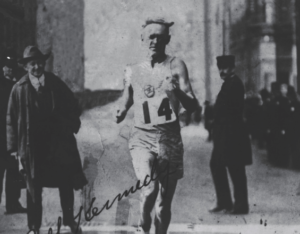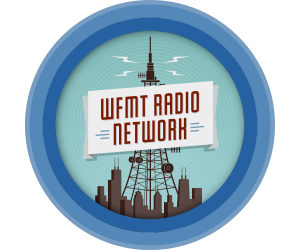Arts Week
Excerpt from Prologue of Bricklayer Bill
 “Earlier that year, New York’s Knickerbocker Athletic Club was hosting a day-long series of amateur athletic contests at Columbia Oval in the Bronx.
“Earlier that year, New York’s Knickerbocker Athletic Club was hosting a day-long series of amateur athletic contests at Columbia Oval in the Bronx.
“The strangest of these was a twenty-five-mile race on the roads from Stamford, Connecticut, to the Bronx, finishing up with two laps around the track in the stadium. No such race had ever been held in America—nor (despite a persistent misconception) had any such race taken place in recorded human history until a few months earlier, in Greece. And about a mile of the Knickerbocker race would pass through Bill’s hometown.
“Thirty men took the train from New York to Stamford that morning, were shown to dressing quarters, and changed into tracksuits. Shortly after noon, an official fired a revolver into the air and the runners were on their way, heading out of town on East Putnam Avenue. “The day,” reported the Brooklyn Eagle, “was glorious for sport,” albeit not exactly for the athletes. “The sun made matters rather uncomfortably hot for most of the competitors,” not to mention that “there was scarcely a breath of wind” to relieve them. But at least “for the spectators the weather conditions left nothing to be wished for.”
“Accompanied by a group of bicycle riders called the Harlem Wheelmen, the runners covered the first five miles with confidence. Once they passed through Greenwich’s town center, the contestants’ lack of experience started to show. “Several of the runners began to think that their early hopes were not warranted by the facts,” noted the New York Herald. Soon, the telegraph poles disappeared and they were on a dusty, bumpy, rocky, rutted country road.
“After another couple of miles, the panting plodders crossed a bridge over the Byram River and entered New York. Soon they reached paved roads and civilization once more—Port Chester, the first official checkpoint. A waiting official dashed off a telegram to the Bronx: John McDermott and Louis Liebgold were running neck and neck to lead the pack. McDermott was “a little lank fellow,” according to the Eagle, and he worked during the week as a lithographer. Liebgold “hadn’t trained an hour for the race.” The rest of the field was scattered behind them, about fifteen minutes separating the leaders from the last of the laggards.
“As the front-runners approached, young Bill Kennedy, spectating from a spot steps from his family’s walk-up flat, couldn’t contain his excitement. With no tape or cop to stop them, he and his pals leapt into the road and ran alongside McDermott and Liebgold. You can picture them hollering encouragement as they dodged the squeaky wheels of the Harlem cyclists. The boys kept up with the leaders all the way to the railroad bridge into neighboring Rye before turning back.
“Thus,” wrote Bill years later, “I claim the honor of running in this pioneer race, though unofficially.”
From BrickLayer Bill: The Untold Story of the Workingman’s Boston Marathon
by Patrick L. Kennedy and Lawrence W. Kennedy
Copyright © 2017 by University of Massachusetts Press
Available at Amazon or through your local independent bookseller.












